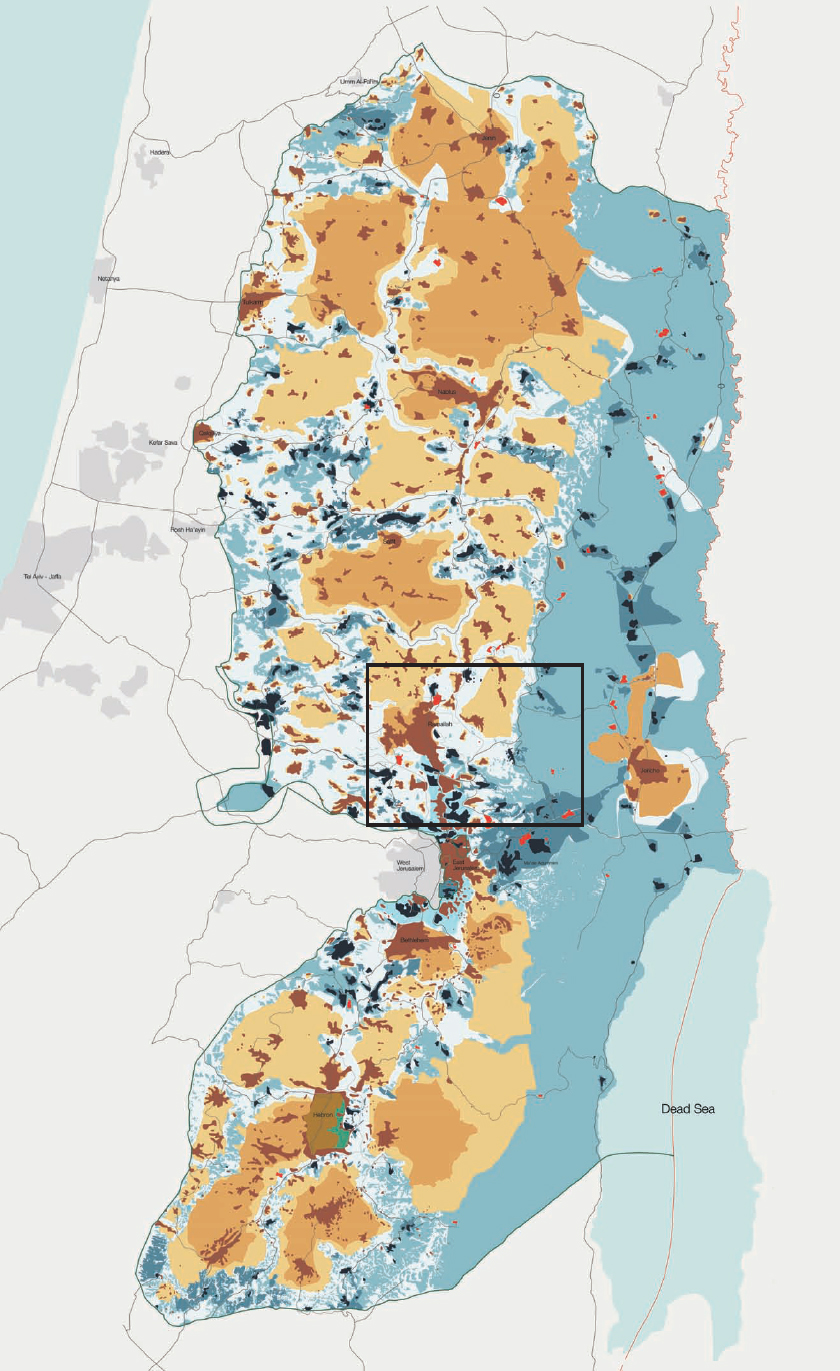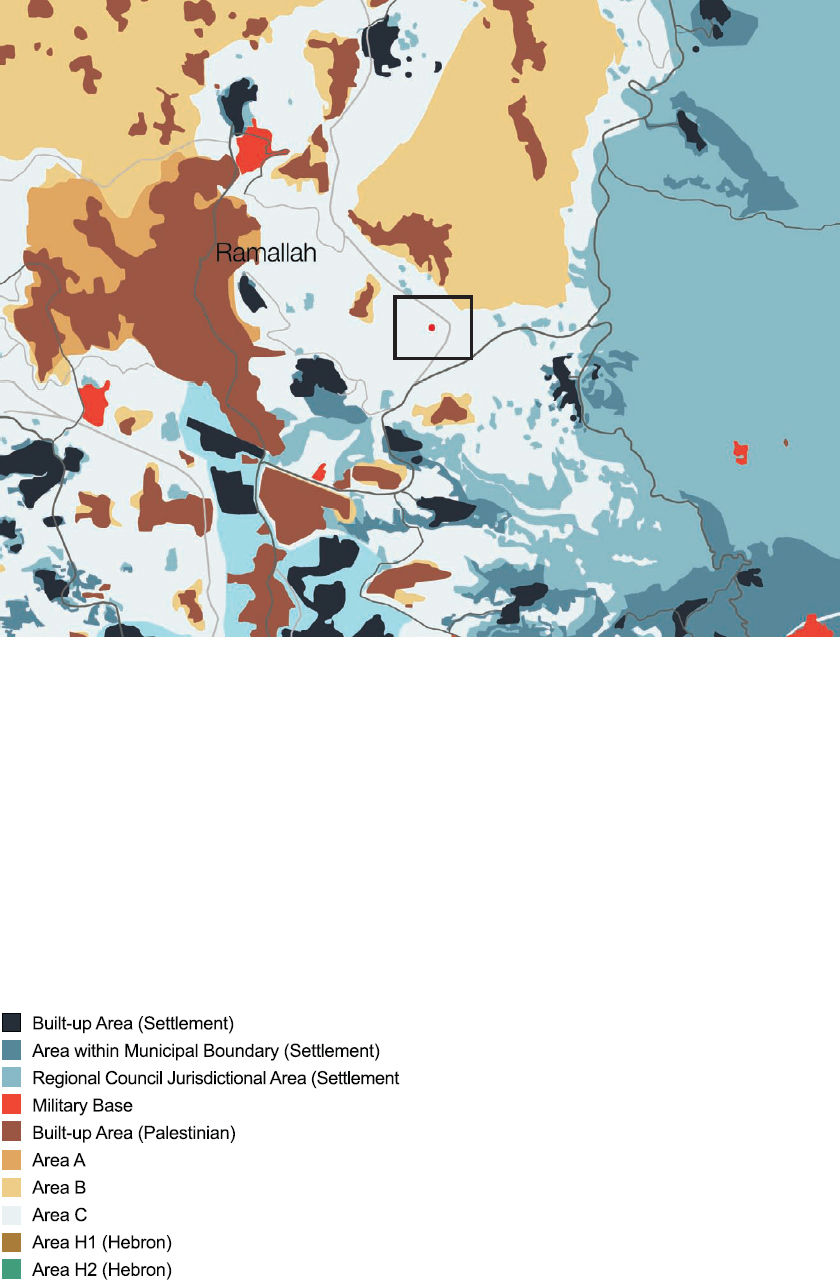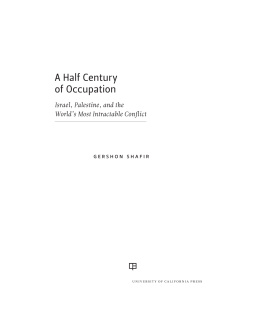
Hollow Land
Israels Architecture of Occupation

EYAL WEIZMAN

Cujus est solum, ejus est usque ad coelum et ad inferos
(Whoever owns the ground, it is his from the depth of the
earth to the height of the sky)
Contents

Map of Jewish settlements in the West Bank. BTselem and Eyal Weizman, 2002


Migron. Milutin Labudovic for Peace Now, 2002
Robinson believed that if he looked at it hard enough, he could cause the surface of the city to reveal to him the molecular basis of historical events, and in this way he hoped to see into the future.
Patrick Keiller (London)
The duality of intelligence and stupidity has been part of the Zionist project from the beginning
Mourid Barghouti
Nua nua sof
Yeshayahu Gavish
(Move, move, out the order for the beginning of the assault of the 1967 war)
A frontier scenario
In the years following the 1993 signing of the first Oslo Accord, which was intended to mark the beginning of the end of the conflict over Palestine, it became increasingly difficult for Israeli settlers to obtain official permits to establish new settlements in the West Bank. As a result, settlers resorted to increasingly sophisticated methods of piracy to help the government which, unofficially, was keen to see settlements established but could not be seen to be helping in their foundation bypass its own laws and international commitments.
In 1999 several settlers complained to the military of bad reception on their cellphones as they drove round a bend on the main highway, Road 60, leading from Jerusalem to the settlements in the northern West Bank. In response, the cellphone provider, Orange, agreed to erect an antenna in the area. The settlers pointed to an elevated hilltop overlooking the bend as a potential site for the mast. The same hilltop had been the site of previous unsuccessful settlement attempts: three years earlier settlers claimed that the summit was an archaeological mound under which the biblical town of Migron was buried. Sample excavations unearthed the remains of nothing older than a small Byzantine village, but the hilltop was named Migron regardless. Two young settlers occupied the hill, living in converted shipping containers, but, with no prospect of being able to develop the site, left after a short time.
The hilltop, its slopes cultivated with figs and olives, was owned by Palestinian farmers from the villages of Ein Yabrud and Burka who were shepherds there. According to the emergency powers invested in the Israeli military, however, the construction of a cellphone antenna could be considered a security issue, and could therefore be undertaken on private lands without obtaining the owners consent. Following a request by Orange, the Israel Electric Corporation connected the hilltop to the electricity grid and the national water provider connected the hilltop to the water system, purportedly to enable the construction work.
Because of delays in the masts construction, in May 2001 settlers erected a fake antenna and received military permission to hire a 24-hour on-site private security guard to watch over it. The guard moved into a trailer at the foot of the mast, and fenced off the surrounding hilltop; soon afterwards, his wife and children moved in and connected their home to the water and electricity supplies already there. On 3 March 2002, five additional families joined them, and the outpost of Migron formally came into being. The outpost grew steadily. Since families were already living onsite, the Israeli Ministry for Construction and Housing built a nursery, while some donations from abroad paid for the construction of a synagogue.
The antenna became a focus of territorial intensity in the surrounding landscape. The infrastructure built for it allowed the outpost to emerge. The energy field of the antenna was not only electromagnetic, but also political, serving as a centre for the mobilizing, channelling, coalescing and organizing of political forces and processes of various kinds. Migron is not the only outpost established around a cellphone antenna. The logic of cellular communication seems oddly compatible with that of the civilian occupation of the West Bank: both expand into territories by establishing networks that triangulate base stations located on high ground along radiation- or sight-lines. Moreover, the cellular networks serve a military function. Using them for its own field communications, the military was able to replace its bulky military radios with smaller devices capable of transmitting field imagery and GPS locations between soldiers and units.

The outpost of Antenna Hill. Note antenna at centre of the outpost. Milutin Labudovic for Peace Now, 2002
An upsurge in the establishment of outposts has always been an indication of what settlers suspected to be impending territorial compromises. Such activity is intended to sabotage prospects of political progress, and secure as much land as possible for the Israeli settlers in the Occupied Territories, in case partial withdrawals are to be carried out. After returning from negotiations with the Palestinian Authority and the Clinton administration at the Wye Plantation in Maryland in October 1998, Ariel Sharon, then Foreign Minister, rushed settlers to move, run and grab as many hilltops as they can... because everything we take now will stay ours. Everything we dont grab will go to them. In recent years, many outposts have been constructed in an attempt to influence the path of Israels Separation Wall that, at the time of writing in 2006, is carving a circuitous route through the West Bank, the logic being that by seeding the terrain with anchor points in strategic places, state planners would reroute the Wall around them in order to include them on the Israeli side. Outposts thus mark some of the most contested frontiers of the IsraelPalestine conflict. Often, rarely beyond their teens, the so-called youth of the hill reject their parents settlersuburban culture for a sense of the wild frontier, one equally influenced by the myth of rough and rugged Western heroes as with the Israeli myth of the pioneering Zionist settlers of the early twentieth century. The armed outpost settlers often clash with local Palestinian farmers, violently drive them off their fields and steal their produce. In retaliation, armed Palestinian militants often attack outposts. Other outposts are then established as punitive measures near locations where settlers have been killed.
Outposts have thus become the focus for political and diplomatic squabbles. Local and international peace organizations engage in direct actions against outpost expansion. In 2004 several Israeli peace activists managed to steal five trailers from Migron, provocatively placing them in front of the Ministry of Defence building in Tel Aviv, demonstrating that evacuation could be carried out if the will to do it exists. As international pressure mounts, Israeli governments announce (usually with great fanfare) their decision to enforce Israeli law and evacuate a number of outposts. Occasionally, clashes occur between government and settler forces: thousands of policemen battle with thousands of settlers, who travel for the televised fight from across the frontier. Often, however, a compromise is reached: the trailers are reattached to trucks, and relocated to another Palestinian hilltop.
Next page














